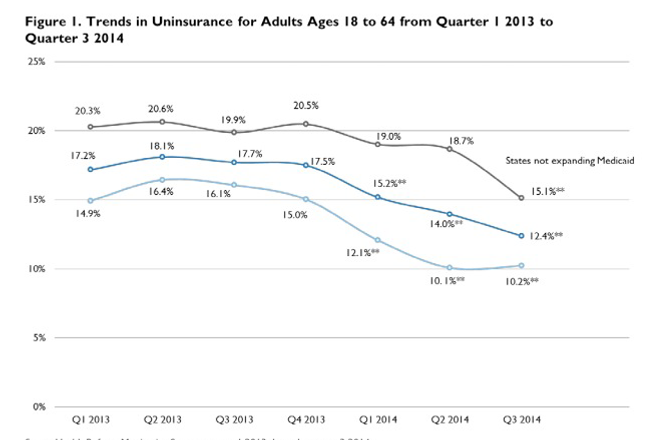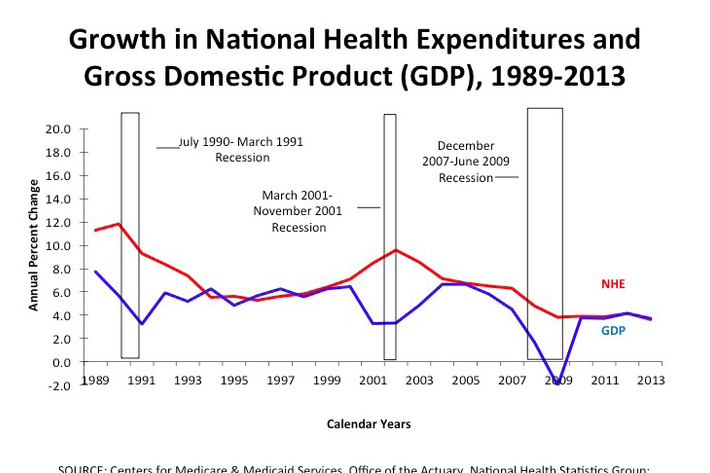
A week ago, Sen. Charles Schumer said his party made a political mistake by passing the Affordable Care Act rather than some unspecified economic measure. Put aside the dubious political logic (in reality, Congress’s appetite for additional stimulus had been completely exhausted with the passage of the original version). Also put aside the brutally cold moral logic (that politicians should prioritize keeping power over enacting positive change).
Schumer’s comments, announced at the National Press Club, sanctify a hardened perception among the general public, which has encroached into the Democratic Party itself, that Obamacare was not worth the trouble. The law is a bugaboo upon which every criticism of Obama has attached itself — he is too economically elitist, or too partisan, or too complex. Left-of-center analyst Thomas Edsall recently went so far as to suggest Obamacare was “destroying the Democratic Party.” What makes this wave of regret — not even taking into account the unmitigated hostility from the political right — so strange is that Obamacare is actually working. Indeed, evidence continues to mount that the law is working extremely, even shockingly, well.
The overall goal of the law was to gradually reverse the two most perverse facts about the U.S. health-care system: Its overall cost has exploded, and it denies access to tens of millions of people. Four major new sources of information have come out this week, all of which have further demonstrated the law’s success.
1. Increasing access to the uninsured. The law was never going to ensure that every single American had insurance. President Obama promised, in the face of political pressure, not to extend its coverage to non-citizens, who make up about one fifth of the uninsured population. Five* Supreme Court Justices decided to allow states to boycott the law’s Medicaid expansion, adding some 4 million more to the ranks of the uninsured. Also, any new law takes years to ramp up participation and public awareness.
Conservatives widely denied that the law would even succeed at its basic goal of increasing access to health insurance. Obamacare “created more uninsured people than it gave insurance to. And it promises to create even more,” argued National Review’s Jonah Goldberg. Fox News panelist Charles Krauthammer proclaimed the law would result in “essentially the same number of uninsured.”
Every serious method of measuring has shown the law effecting significant reductions in the uninsured rate. The latest, a report by the Urban Institute yesterday, shows that the uninsured rate has fallen nationally by 30 percent:

That rate is 36 percent in states participating in the Medicaid expansion. The states whose Republican governors or legislators have boycotted the expansion have seen their uninsured rates fall by just 24 percent, dragging down the average.
2. Reducing overall health-care costs. Obamacare actually had two different fiscal responsibility goals. The first was simply to offset the cost of new coverage with a combination of spending cuts and higher taxes — which, according to the Congressional Budget Office, it did. The second, more ambitious goal was to change the incentives that made doctors and hospitals eager to charge more money regardless of its effect, and that gave people who pay for that insurance little means to shop for better deals. Obamacare’s architects hoped that, on top of merely paying for the cost of new coverage, they could “bend the cost curve” downward.
When the law passed, conservatives insisted it would increase rather than decrease health-insurance costs. (Esteemed conservative intellectual Yuval Levin, in 2010, insisted it “completely fails” to reduce overall health-care spending.) Since the law passed, health-care inflation has fallen to historically low levels. Conservatives have repeatedly insisted this was a blip that would soon be reversed, and seized upon any apparent evidence for this case. When health-care spending spiked in the first quarter of 2014, Megan McArdle announced vindication: “After all the speculation that Obamacare might be bending the cost curve, we now know that so far, it isn’t.” (It turned out the first-quarter spike in health-care spending was a preliminary miscount that has since been corrected.)
Also yesterday, the Centers for Medicare and Medicaid reported that health inflation in 2013 not only remained in, it fell to the lowest level since the federal government began keeping track:

3. Hospital errors. Obamacare has a wide variety of reforms designed to bend the cost curve. One of them is a new payment system that encourages hospitals to avoid readmissions. The old Medicare system reimbursed hospitals for every procedure. This meant they had a perverse incentive to do a bad job taking care of their patients — a patient who developed an infection, or needed readmission, would produce a second stream of revenue for the hospital. Obamcare’s payment reforms changed that incentive. A new report finds that hospital-acquired medical conditions has fallen by 17 percent since 2010. (This has not only saved huge amounts of money, it has also saved 50,000 lives.)
4. Insurance competition. Obamacare is based on an old Republican plan, developed by the Heritage Foundation and first tried by Mitt Romney, whose central feature was market competition. The animating premise was that forcing insurance companies to lure customers on an open, regulated marketplace would bring prices down.
In all fairness, liberals did not place much faith in this dynamic. They didn’t accept a health-care plan that gave insurance companies a central role out of ideological conviction, but out of necessity — appeasing the industry, they calculated, offered them the only viable way to pass a bill through Congress. But the dynamic has turned out to work much better than expected. (The most natural ideological allies of the market function, conservatives, all committed themselves to the Republican Party’s totalistic opposition to every facet of the law.)
A new Kaiser Health News analysis released this week finds:
A surge in health insurer competition appears to be helping restrain premium increases in hundreds of counties next year, with prices dropping in many places where newcomers are offering the least expensive plans … In counties that are adding at least one insurer next year, premiums for the least expensive silver plan are rising 1 percent on average. Where the number of insurers is not changing, premiums are growing 7 percent on average.
The downside is that the lower prices require consumers to actively shop on the exchanges. Customers who automatically renew their existing plan without comparison shopping will miss out.
Obamacare’s bitter opponents on the right have increasingly trained their focus on measures of public opinion. It is true: Polling on the health-care law remains dismal as ever despite its success. Obamacare’s opponents have won a public-relations struggle. They have not won an argument.
*Edit: Seven justices actually voted for the ruling, which gave states the right to opt-out of Medicaid. Many legal observers believe, but of course cannot prove, that the support of two Democratic appointees for this measure was a form of horse-trading to preserve the law’s overall framework, which John Roberts nearly decided to overturn completely. The actual decision to make Medicaid voluntary was likely made by five Republican-appointed justices, but formally the decision was endorsed by seven.






























